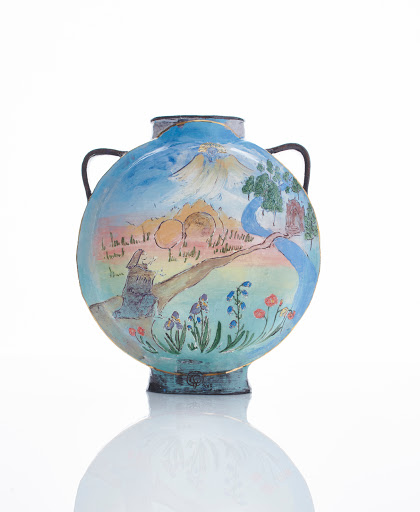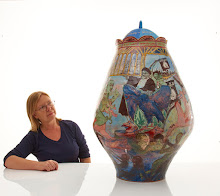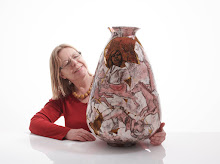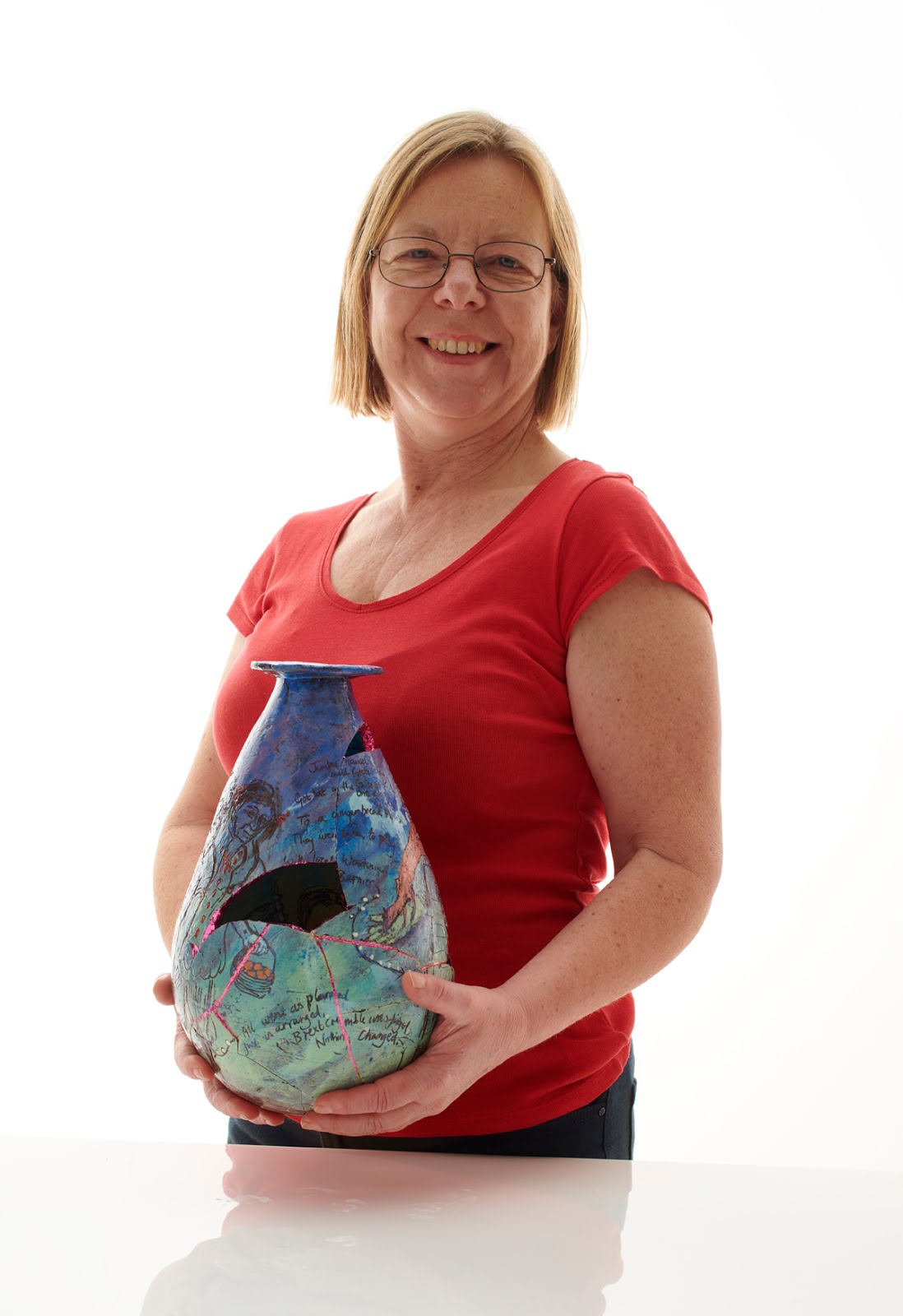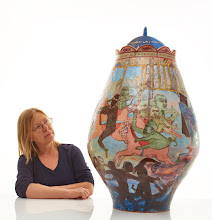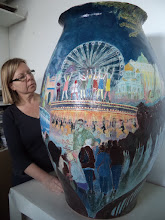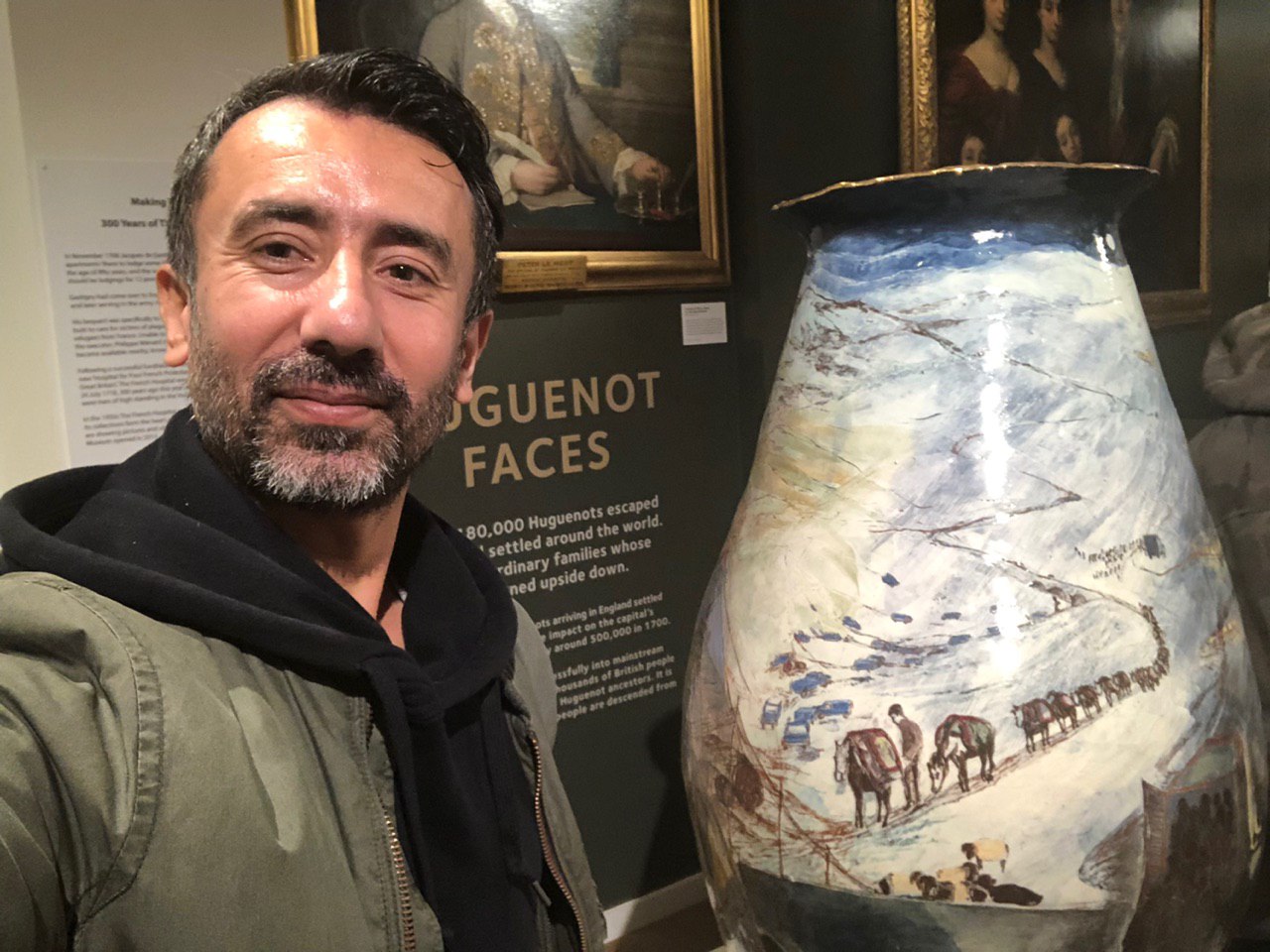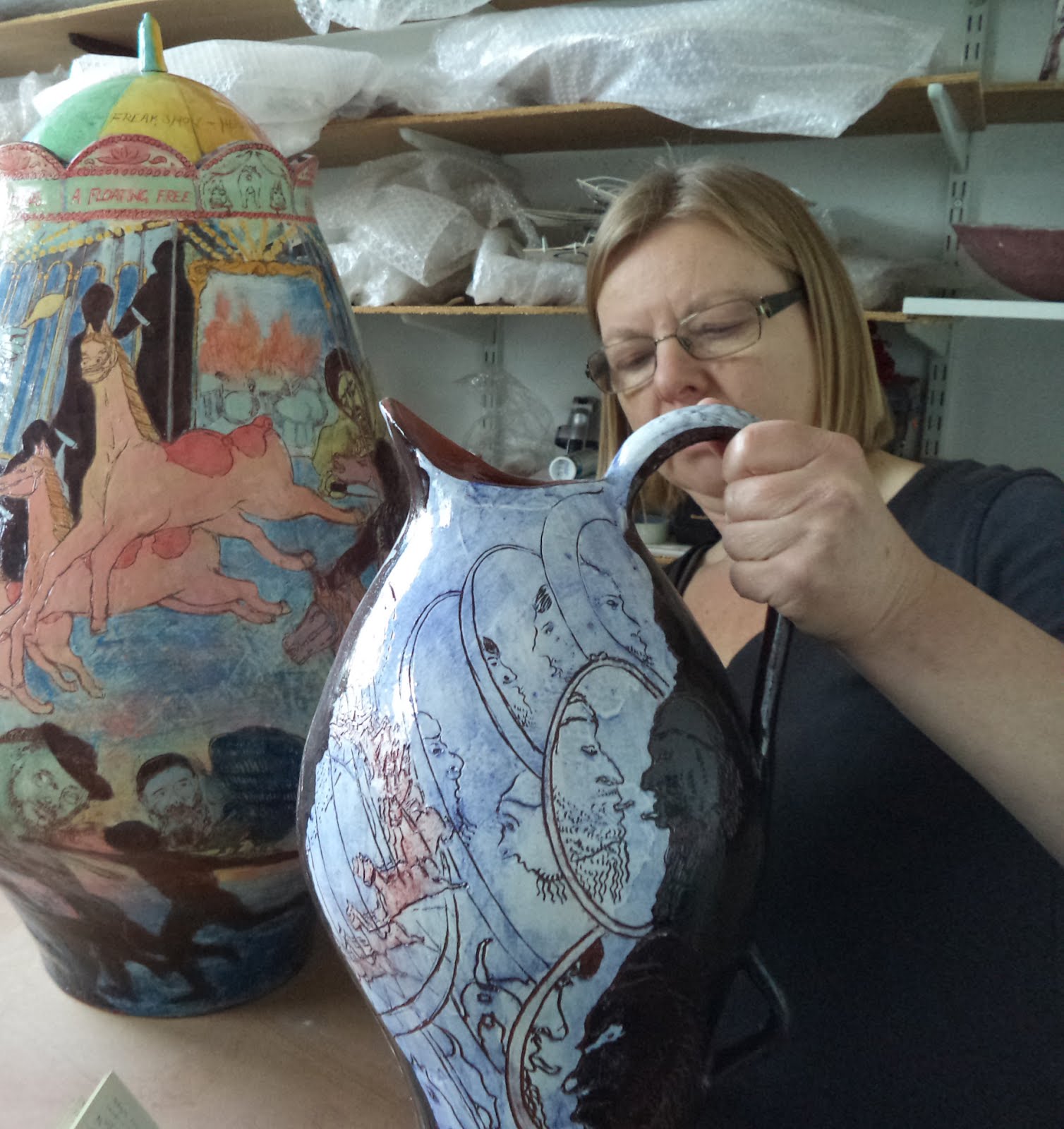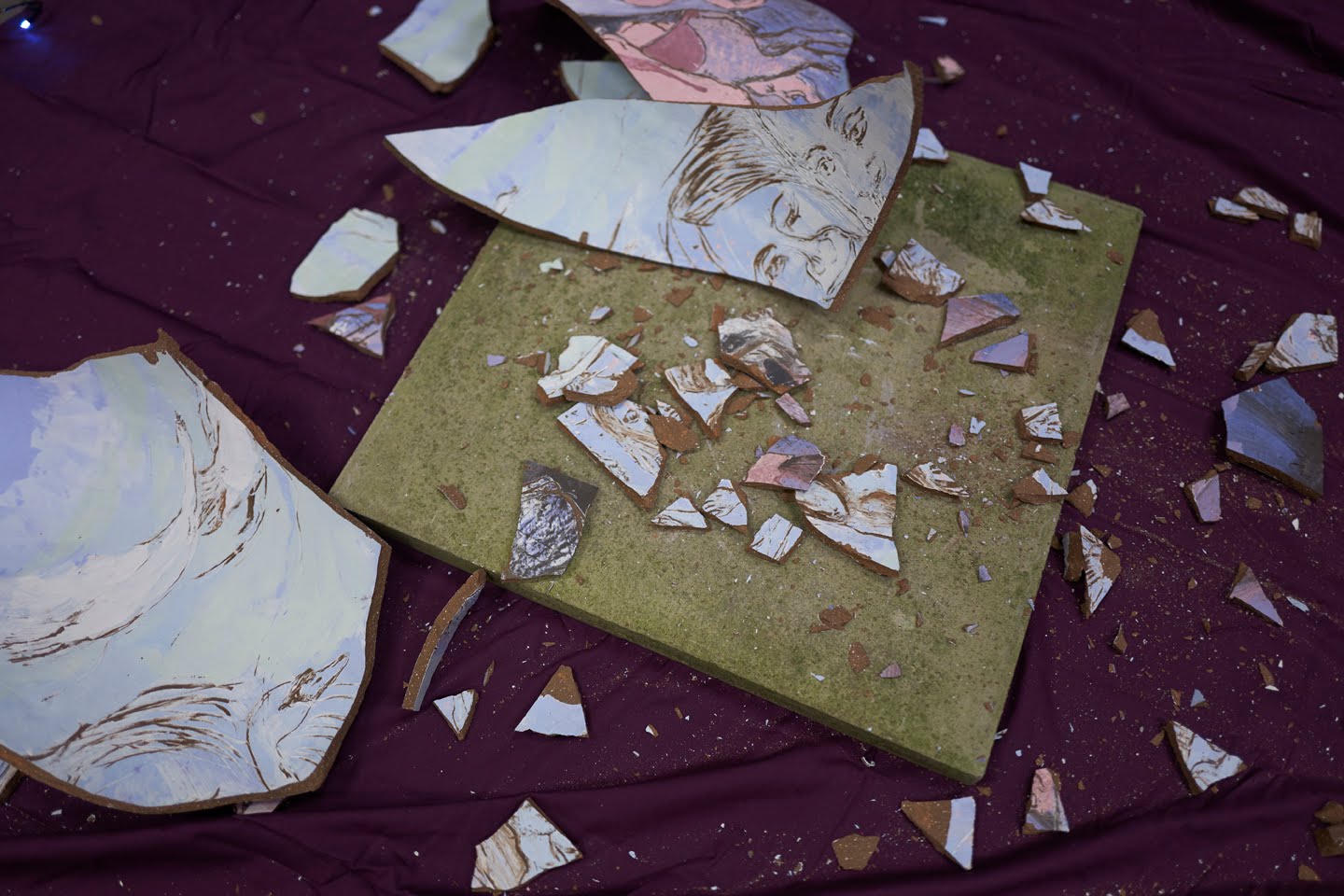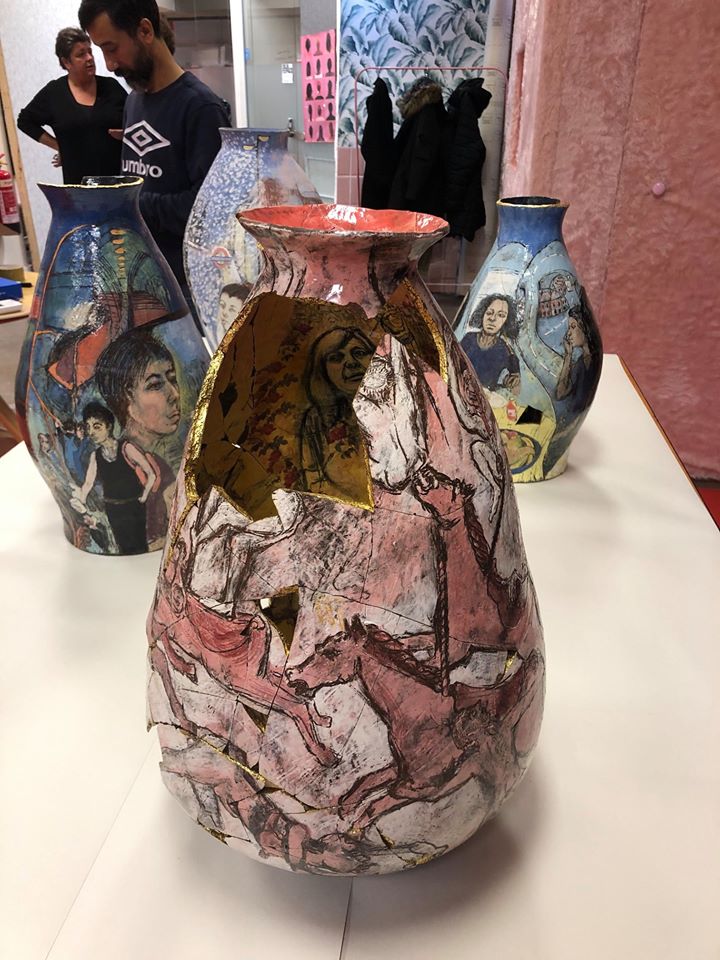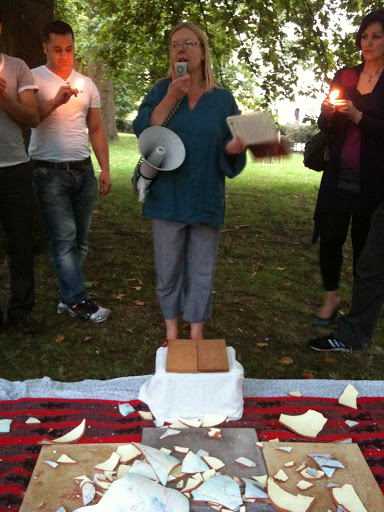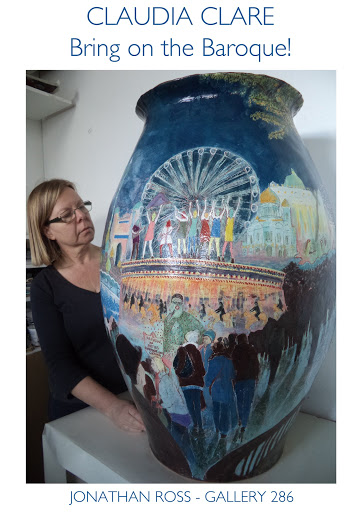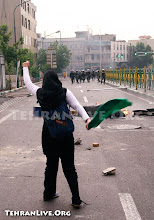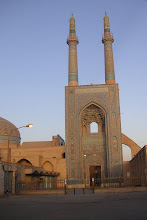The Journal of Modern Craft was launched at The Art Workers Guild on 28th January 2008 in a darkly panelled room bristling with hundreds of portraits of men and one woman. Tanya Harrod (RCA, London) gave a speech and so did Glen Adamson (V&A, London). They are two of the editors of the Journal, the third is Edward S. Cooke from Yale University USA. JMC is billed as, ‘the first peer-reviewed academic journal to provide an interdisciplinary and international forum in its subject area’. Its projected image is SERIOUS. All the pictures are published in black and white – a sure sign of HIGH seriousness - and it’s thoroughly referenced.
Issue 1 includes five articles, a ‘Statement of Practice’, a ‘Primary Text’ and exhibition and book reviews. The ‘Statement of Practice’, in this issue from Simon Starling, reads like a (very) tidied up version of a work-diary, a collection of carefully trimmed and collated notes on things, people and events that interest him and shape his work. The ‘Primary Text’ is an historical text, in this case a lecture by design and architecture critic Rayner Banham from 1973, introduced by Alice Twemlow.
The overall feel of this journal is certainly a good, serious, chewy read. In spite of the presence of the contemporary practitioner’s statement, however, JMC doesn’t feel like a publication that concerns itself with contemporary craft, rather it investigates the Modernist period, which includes, for example, articles about early feminist work from the 1960s and 70s, Polish craft from the early 20th Century and one by Tag Gronberg, which examines the influence of modernist craft and design on Simon Starling’s work and which places his practice within a recognised historical lineage. JMC has a slightly museumy feel to it, which could do with being dusted down and the self-conscious effort to be serious, and therefore be taken seriously by Planet Academia, is probably somewhat over-egged, but may, perhaps, relax with time. There is certainly no slipping into use of the first person, for example, it’s all very proper third person expression, demonstrating the separateness of the researcher/writer from the researched. We are not, at any stage, concerned that the writer may also be a maker, and certainly not the maker of the work being discussed. The supremacy of ‘academic objectivity’ therefore remains uncontested in the carved-stone corridors of the Journal of Modern Craft.
If you’re looking for good writing and (most of the time), good research on craft from the modernist period with a historical perspective, then this is very much for you. If you’re looking for excellent writing on contemporary practice, particularly written by practitioners, then you will be disappointed, and to be fair, the Journal does not, at the moment, set out to cover this territory. There are some illuminating examples, however, of the problem of this sort of ‘objective’ writing, in a couple of the articles, which are worth considering.
The first is in ‘Materials, Skills and Cultural Resources: Onta Folk Art Pottery Revisited,’ (Brian Moeran, pp 35-54). Moeran complains that the potters are ‘uniformly vague about just what the designation of Onta pottery as an Important Intangible Cultural Property actually means,’ (italics mine). The reference attached to this statement cites an exception who, he says, remembers the details of this designation precisely. He goes on to dismiss the potters’ complaint that the (government) Agency that produced the designation didn’t understand their skills and provides the following interpretation: ‘Although there may be some truth in this point of view, this kind of remark may also be understood as a typical self-defence mechanism on the part of potters who can use the theme of “skills” to their own advantage as and when necessary.’ It would take a full-length academic article in itself to unpick this stuff, starting with the concept of meaning in ‘Intangible Cultural Property’, but one has to ask, if one person can articulate the details of what was considered by the Agency to be so specific about Onta pottery that it must be ‘preserved,’ then it is highly probably that they all can. They would, however, be very likely to disagree with each other, and they are very likely to be questioning the need to preserve it anyway, and indeed, what counts as preservation, - see what I mean about lengthy article required - my point is that this is where the weakness of the researcher, an ethnographer and anthropologist in this case, really shows. The nub of the problem here is not the potters being cagey or manipulative, but bad ethnography, or to put it more plainly still, a woeful lack of interviewing skills on the part of the researcher. While there is no guarantee that another potter would be much better as an interviewer, s/he may at least be better equipped with knowledge of the skills to pose more searching questions, or may simply be better equipped to be manipulative in return.
Now, I am no devotee of the notion that ‘experiential knowledge’ is superior, or absolute or is bound always to be more efficient at extracting information but, in Moeran’s article, the potters barely emerge as fully cognisant practitioners at all, rather they appear as objectified currency in a game of mediated national identity. They come across as mysterious rural makers, the classic example of the ‘orientalised (literally in this case) other’. Unfortunately, Potters themselves have amply demonstrated their own capacity to orientalise and patronise themselves and each other, especially rural and/or traditional makers, whether in distant lands or a village down the road and, without doubt, this kind of research is far more dependent on its methodology than on the personal experience of the researcher and it is precisely for that reason that I had hoped for something better in a new Journal that promised to be academically sound.
The second example of the problem of ‘objective writing’ is in the article entitled, ‘Sources of Modernity: The Interpretations of Vernacular Crafts in Polish Design around 1900.’ For me, at first, it was fascinating; I’ve never read anything about Polish craft. Poland to me equals all manner of repressive political regimes, but certainly not craft, design, Tartar mosques or pretty carpets. However as I struggled with seemingly impenetrable Polish spelling, I did begin to notice that, fascinating though it was, it was largely an historical account. I’m still not clear what the argument was, so I handed it over to one of my studio-mates, Anete Deleu Regel, who is Polish, knowing that she, at least, would not be distracted with the need to pour over pronunciation and maps as I was. She read the entire journal and left an note for me, praising JMC to the skies, but with the following caveat:
‘The article about Polish craft at the end did not seem so boring as at the beginning, and I’m very happy to read about my country’s culture here in London.’ (She had commented to me earlier that she thought the article was, ‘a bit basic’.) ‘I am sure that it (JMC) adds definitely a new and very important “flavour” to the “landscape of Crafts”’.
Arguably, it doesn’t matter if the article was mainly just an account. In a country where so little is known about Polish material culture of any historical period, everything is helpful. It was noticeable, however, that Anete knew about all the makers and designers cited in the article which made me think that, in the fullness of time, it would be very healthy if knowledge such as hers, combined with the expertise of the practitioner, could be brought into craft writing. We need this kind of knowledge and rigour, and if JMC is anything to go by, it isn’t always to be found in academic writing. The presence of the maker in JMC, the ‘I’, is felt only through the artist’s statement, which emphasised the sense of the maker as the ‘other’, the subject of proper ‘objective’ research and writing rather than an active intellectual participant in the process of defining and developing craft discourse.
Where the ‘proper academic writing’ approach really excels is in the first article, ‘Fiber Art and the Hierarchy of Arts and Crafts, 1960-1980. Here Elissa Auther builds a real argument concerning the reception or not of craft practices into art’s ontological identity. Auther’s article demonstrates the point that you don’t need a practitioner to research and write articles about craft to avoid the problem of patronising or objectifying the maker and romanticising craft processes. That said, ‘Academic objectivity’ was routed as a myth decades ago and a little less anxiety about academic propriety, may, paradoxically lead to more stringent research practice, more illuminating writing and ultimately, a more rigorous building of knowledge.
This has been a somewhat critical assessment of JMC but please don’t be put off. As Anete also said in her note: ‘This journal is EXCELLENT!’ I’m the bah-humbug correspondent on this occasion. JMC has been very warmly welcomed elsewhere. I freely admit to being protective about writing on ceramics, and I’m disappointed in this one example. The Journal as whole is fascinating and, yes, irritating at times, but it really pulls the reader into its pages and it is immensely stimulating. So, yes I am going to subscribe, and Anete has petitioned the CPA shop in Marshall St. in London to stock it. So go and buy your sample copy, or go to the publishers website here, and get stuck in. Then be critical. Then write.
Monday 26 May 2008
Subscribe to:
Posts (Atom)
